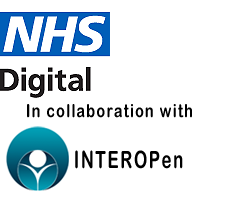A capability statement is a set of capabilities of a FHIR Server that may be used as a statement of actual server functionality or a statement of required or desired server implementation.
Important: This site is under active development by NHS Digital and is intended to provide all the technical resources you need to successfully develop applications using the FHIR® Care Connect Core API. This project is being developed using an agile methodology so iterative updates to content will be added on a regular basis.
Warning: This site is provided for information only and is intended for those engaged with NHS Digital. It is advised not to develop against these specifications until a formal announcement has been made.
0. References
HL7 UK | Care Connect Profile: |
HL7 FHIR Resource: CapabilityStatement |
1. Read
GET [baseUrl]/metadata
The /metadata path on the root of the FHIR server will return the Capability statement for the FHIR server:
For details of this interaction - see the HL7 FHIR STU3 RESTful API
All requests MUST contain a valid ‘Authorization’ header and MUST contain an ‘Accept’ header with at least one of the following application/fhir+json or application/fhir+xml.
2. Example
2.1 Request Query
Retrieve the Capability statement from the FHIR Server, the format of the response body will be xml. Replace ‘baseUrl’ with the actual base Url of the FHIR Server.
2.1.1. cURL
curl -X GET -H 'Accept: application/fhir+xml' -H 'Authorization: BEARER [token]' -v 'https://data.developer.nhs.uk/ccri-fhir/STU3/metadata?'
2.2 Response Body
Important: The following capability statement is provided by the Reference Implementation
Reference Implementation
XML Capability Statement RI viewer
JSON Capability Statement RI viewer
Important: The following draft conformance statement will move as the implementation guide moves on.
2.3 C#
Tip: C# code snippets utilise Ewout Kramer’s fhir-net-api library which is the official .NET API for HL7® FHIR®.
var client = new FhirClient("http://[fhir_base]/");
client.PreferredFormat = ResourceFormat.Json;
var resource = client.Conformance();
FhirSerializer.SerializeResourceToXml(resource).Dump();
